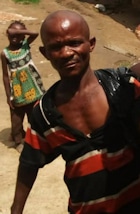Adventure in Bwindi Impenetrable National Park
Gorilla Habituation Adventure in Bwindi Impenetrable National park
Estimated reading time: 5 minutes
Table of contents
Start your adventure in Bwindi Impenetrable National Park with gorilla habituation. The Uganda Wildlife Authority introduced the mountain gorillas’ habituation experience in January 2014. The habituation adventure will cost each person $1500.
Gorilla habituation is a process where the wild mountain gorillas are trained to get used to people. This process can take 2 to 3 years. During this time, the researchers visit an identified wild gorilla group on a daily basis. Researchers learn more about the individual gorillas as well as the way they behave during this period.
Gorilla Habituation Experience
With gorilla habituation, clients will get to spend more time with the mountain gorillas compared to regular gorilla trekking. Gorilla trekking can take three quarters of the day just getting to and from the gorillas but actual time with them is only one hour. Clients get to spend 4 hours with the gorilla habituation experience.
Clients experiencing this adventure in Bwindi Impenetrable Park will be moving with the researchers as they habituate the gorillas. You may also visit semi habituated mountain gorillas during this adventure. The semi habituated gorillas are not as predictable. They can decide to hide and behave in a manner that is not predictable. Researchers can stop the experience at any time if they feel it is harming the semi habituated gorillas.
When Mountain Gorillas are habituated
With time, these mountain gorillas get used to the researchers and each individual gorilla is given a name. Once the researchers are very sure that these gorillas can be habituated, they introduce a mock exercise where a few people start visiting. These small visiting groups can include scientists and journalists. Once such a gorilla family has passed the mock exercise, it is opened for visitation by paying clients.
Bwindi Impenetrable National Park has around 12 habituated gorilla families. The named groups are Habinyanja, Mubare, and Rushegura found in the Buhoma sector. As well as Bitakura, Oruzongo and the Kyaguriro found in the Ruhija sector. And Nshonji, Mishaya, Busingye, Bweza, Kahungye found in the Rushaga sector, and the Nkuringo group found in the south. At the moment, 8 gorilla permits are available for purchase from the Uganda Wildlife Authority. All these sectors are located in the southern part of the park.
Batwa Cultural Visit in Bwindi Impenetrable National Park
Bwindi forest is home to a beautiful diversity of fauna and Flora, including some exotic plants and rare and endangered animals. The forest was also home to the Batwa pygmies, the original dwellers of the ancient forest and known as the keepers of the forest. The Batwa lived in harmony with the forest and survived by hunting small game using bows and the arrows, as well as gathering plants for food and medicinal purposes.

Batwa pygmies in trouble
In 1922, the lives of the Batwa people changed forever when the Bwindi forest became a national park and a world Heritage site. This was done in order to protect the endangered mountain gorillas living within in it’s boundaries. The Batwa pygmies were evicted from the park and became conservation refugees in a world that was very unfamiliar to them. Their skills and the means of subsistence were not so useful in this modern environment and they began to suffer.
In 2001, when the Batwa tribe was on the edge of extinction, the American medical missionaries Dr Scott and Carol Kellermanns came to their rescue. They bought land and established programs to help improve the conditions and the lives of the Batwa. This also included the building of a school, hospital and housing. The Kellermanns also developed water and sanitation projects and found ways that the Batwa pygmies could generate an income and sustain themselves.
Batwa Development Program
These projects are now managed and operated by the Batwa Development Program. The program works closely with the Batwa community to ensure that their indigenous rights are respected. Also that they benefit from the forest being a national park as well as a tourist attraction.
Batwa Cultural Experience
The Batwa cultural experience was created by the displaced Batwa pygmies. It’s goal is to educate Batwa children and to share their amazing heritage and traditions with the world. A day spent with the Batwa gives you a chance to enjoy many different things. This includes hiking in the forest with the people of the forest.
The Batwa guide will provide you with a chance to see how they used to live and hunt in the traditional manner. The Batwa guide will teach you how to use a bow and arrow, to hunt as they used to do. You will also visit a traditional Batwa home and learn from the women how to prepare and cook, as well as serve a meal. Talk to a medicine man and learn about the properties of medicinal forest flora. You also get to hear the ancient legends and the traditional songs. For more about Uganda’s Parks and Wildlife.
Submitted by Green World Safaris. To go directly to their website visit: Tours in Uganda, Rwanda and Democratic Republic of the Congo with Green World Safaris.


